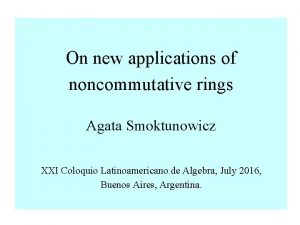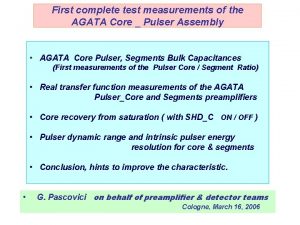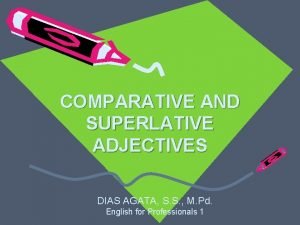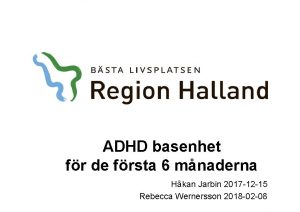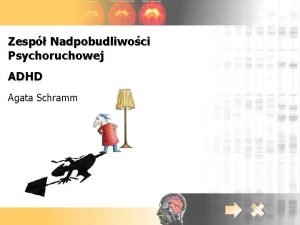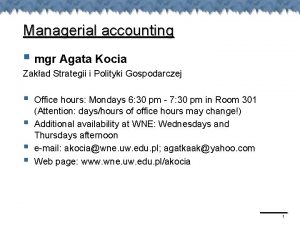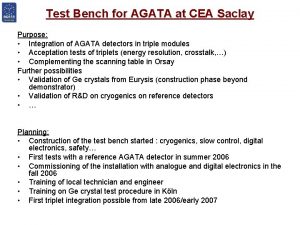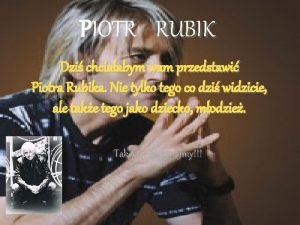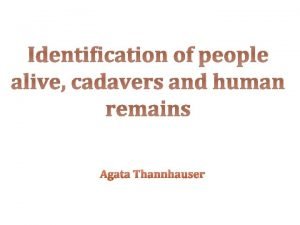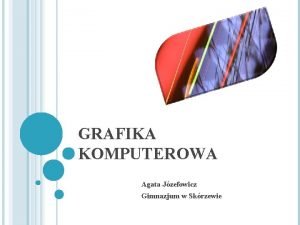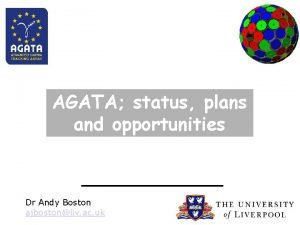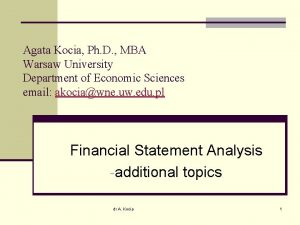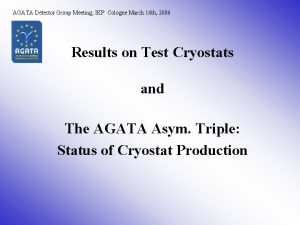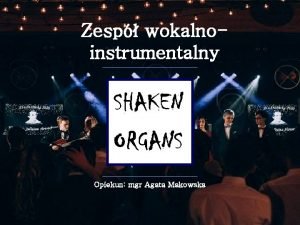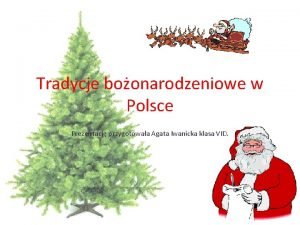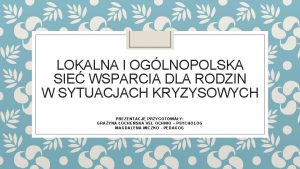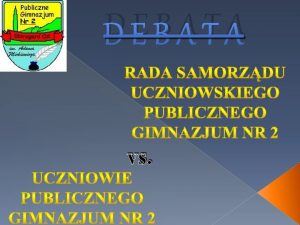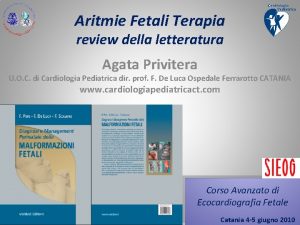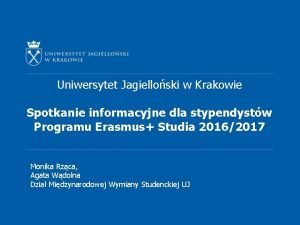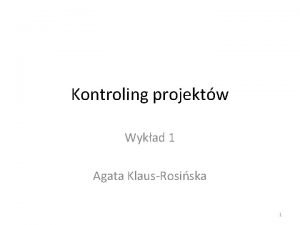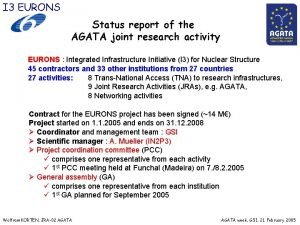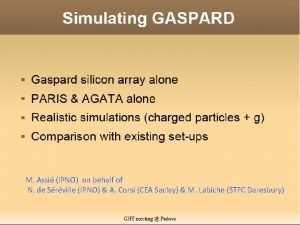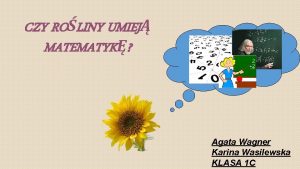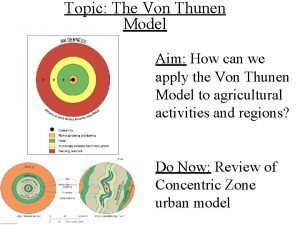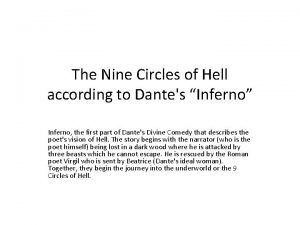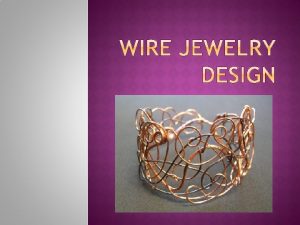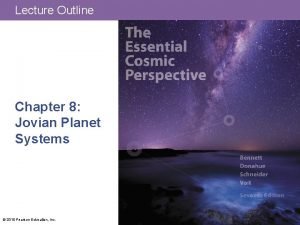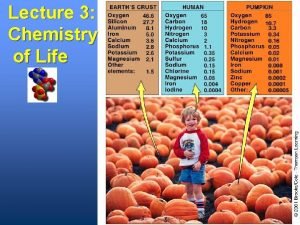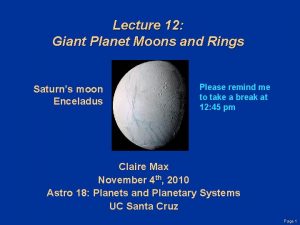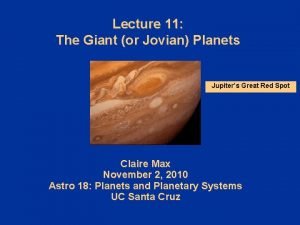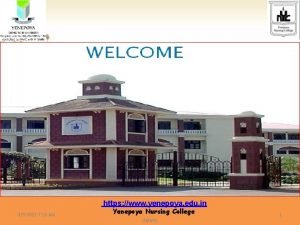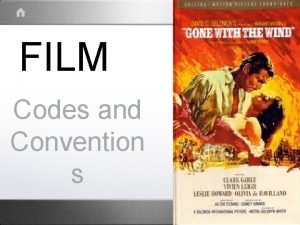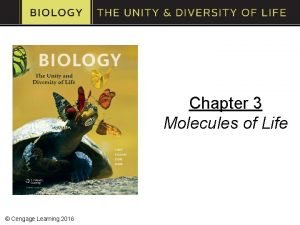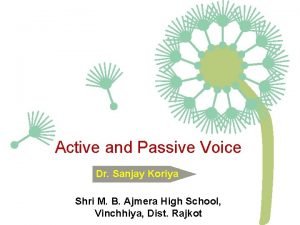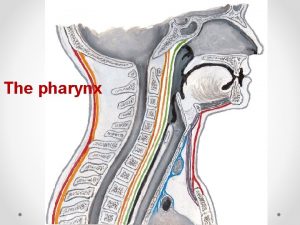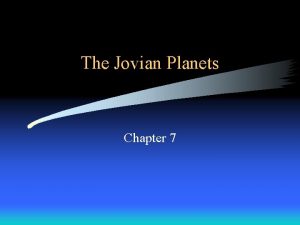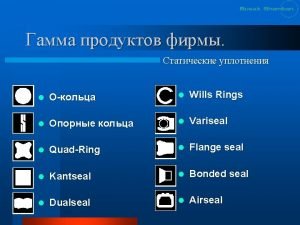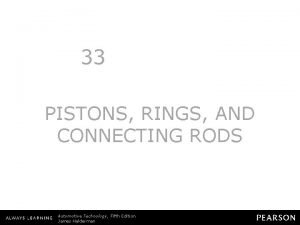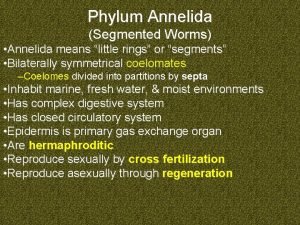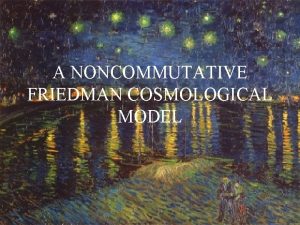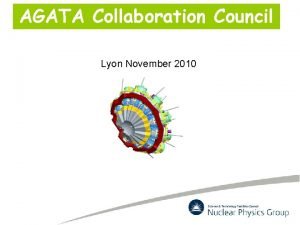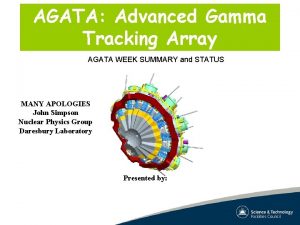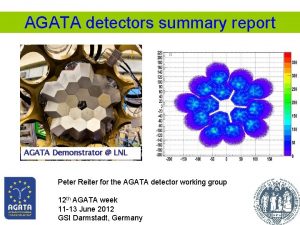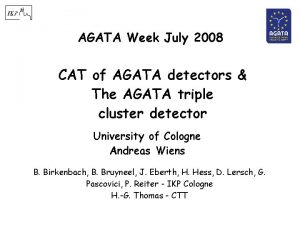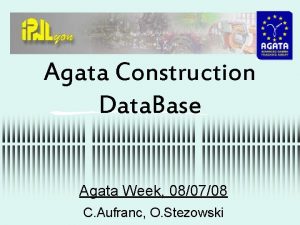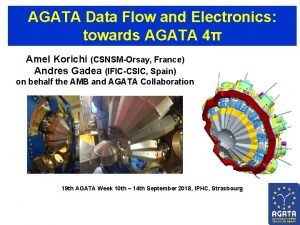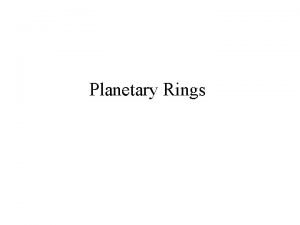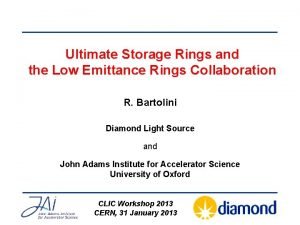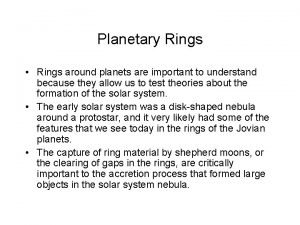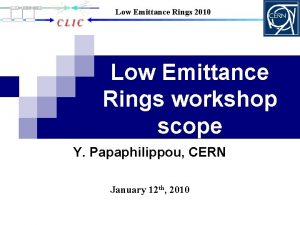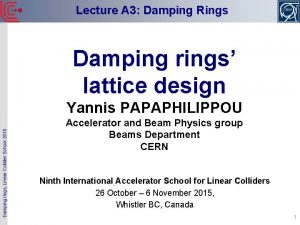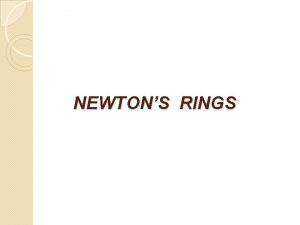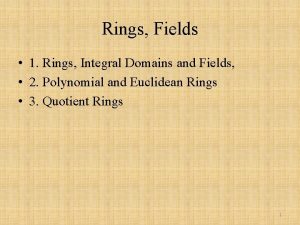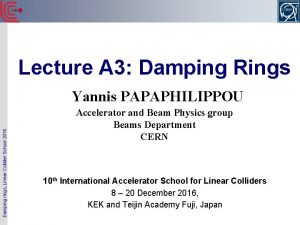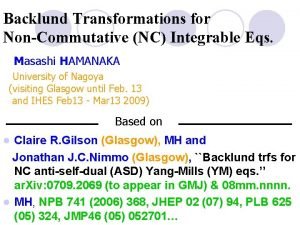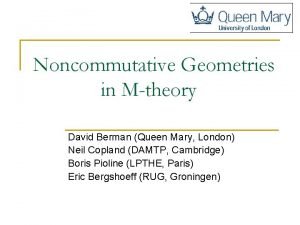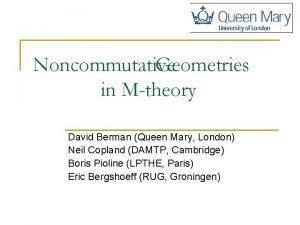On new applications of noncommutative rings Agata Smoktunowicz

















![Amitsur’s result 1956 Let R be a ring, R[x] be the polynomial ring over Amitsur’s result 1956 Let R be a ring, R[x] be the polynomial ring over](https://slidetodoc.com/presentation_image_h/7cb5611dcfe54fe53a768e3c5273d919/image-18.jpg)

![Amitsur’s result 1956 Let R be a ring, R[x] be the polynomial ring over Amitsur’s result 1956 Let R be a ring, R[x] be the polynomial ring over](https://slidetodoc.com/presentation_image_h/7cb5611dcfe54fe53a768e3c5273d919/image-20.jpg)










































- Slides: 62

On new applications of noncommutative rings Agata Smoktunowicz XXI Coloquio Latinoamericano de Algebra, July 2016, Buenos Aires, Argentina.

Agata Smoktunowicz. University of Edinburgh, Scotland, UK This research was supported by ERC Advanced grant 320974

Outline 1. Acons and applications in geometry 2. Differential polynomial rings and tensor products 3. Braces and nilpotent rings 4. Yang-Baxter equation 5. Groups and braces

Motivation Over the last decade there has been a series of new ideas of how to describe properties of certain structures in geometry using noncommutative rings such as reconstruction algebras, MMAs and Acons. These rings can be described via generators and relations, and they can be studied using Gold-Shafarevich theorem and other methods coming from noncommutative ring theory.

Acons and potential algebras Potential algebras and their versions appear in many different and related contexts in physics and mathematics and are known also under the names vacualgebra, Jacobi algebra, etc. Let K�x, y�be the free associative algebra in two variables, and F ∈ K�x, y� be a cyclically invariant polynomial. We assume that F starts in degree � 3.

Potential algebras We consider the potential algebra A(F) , given by two relations, which are partial derivatives of F, i. e. A(F) is the factor of K�x, y�by the ideal I(F) generated by ∂F/∂x and ∂F/∂y , where for a monomial w: ∂w /∂x = u if w = xu and 0 otherwise, ∂w/ ∂y = u if w = yu and 0 otherwise.

Example Let F=xxy+xyx+yxx be our superpotential Then ∂F/∂x =xy+yx and ∂F/∂y =xx. Then the potential algebra A(F)=K<x, y>/I Where I is the ideal generated by xy+yx and xx.

To understand the birational geometry of algebraic varieties via the minimal model program, it is necessary to understand the geometry of certain codimension two modifications known as flips and flops… A central problem is to classify flips and flops in a satisfying manner, and to construct appropriate invariants. Donovan, Wemyss

We associate a new invariant to every flipping or flopping curve in a 3 dimensional algebraic variety, using noncommutative deformation theory. This generalises and unifies the classical invariants into one new object, the noncommutative deformation algebra Acon associated to the curve. It recovers classical invariants in natural ways. Moreover, unlike these classical invariants, Acon is an algebra. Donovan, Wemyss

Acons are potential algebras Acons are certain factors of MMAs- the maximal modification algebras (MMAs); they were developed by Iyama and Wemyss. If R is a 3 -dimensional algebraic variety with MMA A, then by a result of Van den Bergh it follows that the relations of A come from a superpotential (under mild assumptions). Since Acon is a factor of A by idempotents, it too comes from a superpotential.

Questions of Wemyss The potential algebras that come from geometry are finitely dimensional. Wemyss asked several questions Question 1. What is the minimal dimension of an Acon? Question 2. What is the minimal dimension of a potential algebra? Question 3. Do all finitely dimensional potential algebras come from geometry as Acons? Wemyss et al. proved that rings coming from geometry have special central elements and are of a special form.

Some new results on Acons Theorem (N. Iyudu, A. S. ) Let A(F) be a potential algebra given by a potential F having only terms of degree 5 or higher. Then the potential algebra A(F) is infinite dimensional and has exponential growth. Moreover, growth of a potential algebra whose potential F has only terms of degree 4 or higher can be polynomial. Question. If F has terms of degree 4 or higher, can the potential algebra A(F) be finite-dimensional?

Minimal degree of an Acon Theorem (N. Iyudu, A. S. ) The dimension of every potential algebra is at least 8. Therefore, the dimension of every Acon is at least 8. M. Wemyss showed that the potential algebra (Acon) with F=xxy+xyx+yxx+xxx+yyyy has degree 9.

Some results on derivations and nil rings

Connections with differential polynomial rings Surprising applications of derivations in Lie algebras and nil algebras were found by L. Bartholdi, V. M. Petrogradsky, I. P. Shestakov and E. Zelmanov, for example to construct examples of graded nil Lie algebras of polynomial growth.

Nil algebra-every element to some power is zero. A ring R is Jacobson radical if for every a in R there is b in R such that a+b+ab=0 Nilpotent algebra-product of arbitrary n elements is zero (for some n).

The Jacobson radical The ring R/J(R) has zero Jacobson radical, so the Jacobson radical is useful for removing ‘bad elements’ from a ring. Nathan Jacobson
![Amitsurs result 1956 Let R be a ring Rx be the polynomial ring over Amitsur’s result 1956 Let R be a ring, R[x] be the polynomial ring over](https://slidetodoc.com/presentation_image_h/7cb5611dcfe54fe53a768e3c5273d919/image-18.jpg)
Amitsur’s result 1956 Let R be a ring, R[x] be the polynomial ring over R, and J(R[x]) its Jacobson radical. Then J(R[x])= I[x] for some nil ideal I of R. Shimson Amitsur

Possible generalizations Skew polynomial rings: Multiplication xr= ∂(r)x. where ∂ is an authomorphism of R. Differential polynomial rings: Multiplication xr-rx=D(r). where D is a derivation of R.
![Amitsurs result 1956 Let R be a ring Rx be the polynomial ring over Amitsur’s result 1956 Let R be a ring, R[x] be the polynomial ring over](https://slidetodoc.com/presentation_image_h/7cb5611dcfe54fe53a768e3c5273d919/image-20.jpg)
Amitsur’s result 1956 Let R be a ring, R[x] be the polynomial ring over R, and J(R[x]) its Jacobson radical. Then J(R[x])= I[x] for some nil ideal I of R. Shimson Amitsur

Bedi and Ram’s result (1980) Let R be a ring, ∂ be an authomorphism of R, and J( R[x, ∂]) denote the Jacobson radical of the skew polynomial ring R[x, ∂], then J( R[x, ∂]) =I[x, ∂] for some nil ideal I in R.

The Ferrero, Kishimoto, Motoose result (1983) Let R be a ring, and D be a derivation on R. Let J(R[x; D]) denotes the Jacobson radical of the differential polynomial R[x; D]. Then J(R[x; D]) =I[x; D] for some ideal I in R. Question. Is I nil?

The Ferrero, Kishimoto, Motoose result (1983) The Jacobson radical of the differential polynomial R[x; D] equals I[x; D] for some ideal I in R. Question: Is I always nil?

I is nil if 1. R is a commutative ring (Ferrero, Kishimoto, Motoose 1983). 2. R is PI algebra (Bergen, Montgomery, Passman 1983). 3. R is a Noetherian algebra (Jordan, 1975). 4. R is an algebra over an uncountable field (Ziembowski, A. S. 2013) 5. R is an algebra over a field of finite characteristic, and D is a locally nilpotent derivation (A. S. 2015)

Counterexample will appear now…

A counterexample There exists a ring R which is not nil and a derivation D on R such that the differential polynomial ring R[x; D] is Jacobson radical. A. S. (2015)

A counterexample There exists a ring R which is not nil and a derivation D on R such that the differential polynomial ring R[x; D] is Jacobson radical. A. S. (2015) Moreover R can be an algebra over the algebraic closure of any finite field or its subfield.

Does it hold for algebras over other fields? Yes, provided that the following matrix-theory based question has affirmative answer

Matrix theory question Let F be a field. Let R be a semisimple finitely dimensional F- algebra, and let V be a generating space of R. Does it follow that the identity element of R belongs to Vn for some n? Remark: it is true for some fields.

Some questions and related results Question 1. Let R be a ring without nil ideals, does it follow that J(R[x; D])=0? Question 2. Let R be a ring and D be a locally nilpotent derivation on R. Does it follow that J(R[x; D])=I[x] for some nil ideal I of R?

Answer to Shestakov’s question Theorem (Ziembowski, A. S. ) If R is a locally nilpotent ring and D is a derivation on R then the differential polynomial ring R[x; D] need not be Jacobson radical. Question (Nielsen, M. Z): What happens if R is a prime radical? Prime radical is the intersection of all prime ideals in a ring.

Two slides on Tensor products and some questions on Hopf algebras

Tensor product Theorem (A. S. 2014) Over any algebraically closed field there exists an affine infinitely dimensional nil algebra A such that the tensor product A A is nil. Theorem (Puczylowski 1988) If A is an algebra over an ordered field and A A is nil then A is locally nilpotent.

Open Question If R is a finitely generated Hopf algebra, does it follow that the Jacobson radical of R is locally nilpotent? Are nil ideals in R nilpotent? Is it true if R is an algebra over an ordered field?

I. Braces

In 2007 Rump introduced braces as a generalization of radical rings related to non-degenerate involutive set-theoretic solutions of the Yang-Baxter equation. ``With regard to the property that A combines two different equations or groups to a new entity, we call A a brace’’ Wolfgang Rump Recently skew-braces have been introduced by Guarnieri and Vendramin to describe all non-degenerate settheoretic solutions of the Yang-Baxter equation.

In the first part of this talk we will present some classical results of this area, mainly due to Rump. An excellent survey on this research area and new interesting results can be found in the paper by F. Cedo, E. Jespers and J. Okniński, Braces and the Yang-Baxter equation, Communication in Mathematical Physics (ar. Xive version is more extended).

Definition. A left brace is a set G with two operations + and ◦ such that (G, +) is an abelian group, (G, ◦) is a group and a ◦ (b+c) + a = a ◦ b + a ◦ c for all a, b, c ∈ G. We call (G, +) the additive group and (G, ◦) the multiplicative group of the right brace.

A right brace is defined similarly, replacing condition a ◦(b+c)+a=a ◦ b+a ◦ c by (a+b) ◦ c + c = a ◦ c + b ◦ c. A two-sided brace is a right and left brace.

Nilpotent ring-product of arbitrary n elements is zero (for some n).

NILPOTENT RINGS Levitzki’s theorem. Every finite nilpotent ring is a subring of a ring of strictly upper triangular matrices over a field.

NILPOTENT RINGS AND BRACES Let N with operations + and · be a nilpotent ring. The circle operation ◦ on N is defined by a◦b=a·b+a+b Finite two-sided braces are exactly nilpotent rings with operations + and ◦. Intuition: (a+1)·(b+1)=(a·b+a+b)+1

Example. Let N be a strictly upper triangular matrix ring over the field of 2 elements. Then N has exactly 2 elements- 0 and element r= Then (N, +, ◦) is a two-sided brace with the same addition, 0=0+0=r+r and r=r+0=0+r and with the circle operation ◦ r=r·r+r+r=0, 0 ◦ r =0·r+r+0=r, r ◦ 0 =r· 0+r+0=r, 0 ◦ 0 =0· 0+0+0=0

FINITE NILPOTENT RINGS ARE TWO-SIDED BRACES Let (N, +, ) be a nilpotent ring. Then (N, +, ◦ ) is a brace: * (N, +) is an abelian group * a ◦(-a+aa-aaa+aaaa- …. )=0 and a ◦ 0 =a Therefore (N, ◦) is a group with the identity element 0. * a ◦(b+c)+a = a(b+c)+a+b+c+a = a◦b+a◦c

THE SMALLEST LEFT BRACE WHICH IS NOT A TWOSIDED BRACE HAS 6 ELEMENTS. Leandro Vendramin developed programms for GAP and Magma which produce all braces of given size. It works quickly for sizes <100.

CONNECTIONS WITH THE YANG-BAXTER EQUATION

SET-THEORETIC SOLUTIONS OF THE YANG-BAXTER EQUATION ``It is more or less possible to translate all problems of set-theoretic solutions to braces’’ … ``The origin of braces comes to Rump, and he realised that this generalisation of Jacobson radical rings is useful for set-theoretic solutions. ’’ David Bachiller (Algebra seminar, UW, 2015)

Let R be a nilpotent ring; then the solution (R; r) of the Yang-Baxter equation associated to ring R is defined in the following way: for x; y ∈ R define r(x; y) =(u; v), where u = x · y + y, v = z · x + x and z =-u+u 2 -u 3 + u 4 -u 5+. . . If R is a left brace r(x, y) is defined similarly: u= x ◦ y-x and v= z ◦ x-z where z ◦ u = 0. This solution is called the solution associated with the brace R.

It is known (from Rump) that every non-degenerate involutive set-theoretic solution of the Yang-Baxter equation is a subset of a solution associated to some brace B, and hence is a subset of some brace B. Remark: A finite solution is a subset of some finite brace (Cedo, Gateva-Ivanova, A. S, 2016).

Another interesting structure related to the Yang-Baxter equation, the braided group, was introduced in 2000, by Lu, Yan, Zhu. In 2015, Gateva-Ivanova showed that left braces are in one-to-one correspondence with braided groups with an involutive braiding operator. Braces and braided groups have different properties and can be studied using different methods.

WHAT IS A SOLUTION OF THE YANG-BAXTER EQUATION?

A set theoretic solution of the Yang-Baxter equation on X = {x 1, x 2, …, xn } is a pair (X, r) where r is a map r : X × X→ X ×X such that: (r × id. X)(id. X × r)(r × id. X) = (id. X × r)(r×id. X)(id. X×r) The solution (X, r ) is involutive if r 2 = id X ×X ; Denote r(x; y)=(f(x, y); g(x, y)). The solution (X, r) is nondegenerate if the maps y f(x, y) and y g(y, x) are bijective, for every x in X.


MULTIPERMUTATION SOLUTIONS The notions of retract of a solution and multipermutation solution were introduced by Etingof, Schedler and Soloviev. Rump has shown that a solution associated to a left brace A is a multipermutation solution if and only if (i) A =0 for some i, where (1) A =A, A (i+1) (i) =A ·A

MULTIPERMUTATION SOLUTIONS Theorem (A. S. 2015) If A is a brace whose cardinality is a cube(i) free number, then A =0 for some i. Moreover, every solution of the YBE contained in A has finite multipermutation level.

BRACES WHICH ARE NOT NILPOTENT Theorem (David Bachiller, 2015). There exists a finite brace B such that B · B =B. Moreover, B has no nontrivial ideals, hence it is a simple brace. Moreover, B can have 48 elements.

LEFT NILPOTENT AND RIGHT NILPOTENT BRACES In 2005 Rump introduced radical chains Ai and A(i) where (1) A =A A(i+1)=A(i) · A, Ai+1= A · Ai If A(i) or some i, then we say that A is a right nilpotent i brace. If A for some i, then A is a left nilpotent brace. Rump have shown that there are finite left nilpotent braces which are not right nilpotent, and finite right nilpotent braces which are not left nilpotent.

LEFT NILPOTENT BRCES i+1 i i Recall that A = A · A. If A for some i, then A is a left nilpotent brace. i Rump have shown that if A is a brace of cardinality p for some i and some prime number p then A is a left nilpotent brace. Theorem (A. S. 2015) Let A be a finite left brace. Then the multiplicative group of A is nilpotent if and only if Ai= 0 for some i. Moreover, such a brace is the direct sum of braces whose cardinalites are powers of prime numbers.

RELATED RESULTS FOR RINGS THEOREM (Amberg, Dickenschied, Sysak 1998) The following assertions for the following Jacobson radical ring R are equivalent 1. R is nilpotent. 2. The adjoint group of R is nilpotent.

Engel Lie algebras Theorems 1 a. Every n-Engel Lie algebra over a field K of characteristic zero is nilpotent. 1 b. An n-Engel Lie algebra over an arbitrary field is locally nilpotent. 2. Any torsion free n-Engel Lie ring is nilpotent. E. I. Zelmanov.

In 2015 Angiono, Galindo and Vendramin provided Lie-theoretical analogs of braces, and introduced Hopf-Braces.

THANK YOU! Thank you very much!
 Agata smoktunowicz
Agata smoktunowicz Agata kałużna mieszków
Agata kałużna mieszków Agata zielinski
Agata zielinski Agata miklis
Agata miklis Pozostali bohaterowie karolci
Pozostali bohaterowie karolci Agata core
Agata core Boringcomparative and superlative
Boringcomparative and superlative Snap-iv ålder
Snap-iv ålder Agata miklis
Agata miklis Agata miklis opole
Agata miklis opole Projekt agata
Projekt agata Agata kocia
Agata kocia Agata miklis
Agata miklis Piotr rubik wiek
Piotr rubik wiek Agata thannhauser
Agata thannhauser Hello let me introduce myself song
Hello let me introduce myself song Dr agata jozefowicz
Dr agata jozefowicz Agata kowal
Agata kowal Agata boston
Agata boston Agata kocia
Agata kocia Agata miklis
Agata miklis Agata miklis
Agata miklis Agata makowska
Agata makowska Agata iwanicka
Agata iwanicka Agata biernacka bazyluk
Agata biernacka bazyluk Paulina lichnerowicz
Paulina lichnerowicz Agata privitera
Agata privitera Agata wądolna
Agata wądolna Agata miklis
Agata miklis Agata charakterystyka
Agata charakterystyka Agata skwara
Agata skwara Agata klaus rosińska
Agata klaus rosińska Agata miklis
Agata miklis Agata+
Agata+ Agata miklis
Agata miklis Joslin class rings
Joslin class rings What two things do tree rings indicate
What two things do tree rings indicate Von thunen model rings explained
Von thunen model rings explained What are the c shaped rings in trachea
What are the c shaped rings in trachea The outsiders book exposition
The outsiders book exposition Seventh circle of hell
Seventh circle of hell Personal ornaments such as necklaces, rings, or bracelets.
Personal ornaments such as necklaces, rings, or bracelets. Media codes and conventions poster
Media codes and conventions poster Sharroky hollie rings of culture
Sharroky hollie rings of culture Lipids made up of rigid carbon rings
Lipids made up of rigid carbon rings Jupiter's layers
Jupiter's layers Lipids made up of rigid carbon rings
Lipids made up of rigid carbon rings Why do jovian planets have rings
Why do jovian planets have rings Why do jovian planets have rings
Why do jovian planets have rings How are terrestrial planets different from jovian planets?
How are terrestrial planets different from jovian planets? Foot board comfort device
Foot board comfort device Eighth planet from the sun
Eighth planet from the sun Technical codes audio
Technical codes audio Rings of responsibility worksheet
Rings of responsibility worksheet Lipids made up of rigid carbon rings
Lipids made up of rigid carbon rings Passive voice
Passive voice Battlefield along german and russian border
Battlefield along german and russian border Waldeyer's rings
Waldeyer's rings Jupter facts
Jupter facts Wills rings
Wills rings This phylum name means “little rings”
This phylum name means “little rings” Pistons rings and connecting rods
Pistons rings and connecting rods Segmentation of phylum porifera
Segmentation of phylum porifera
